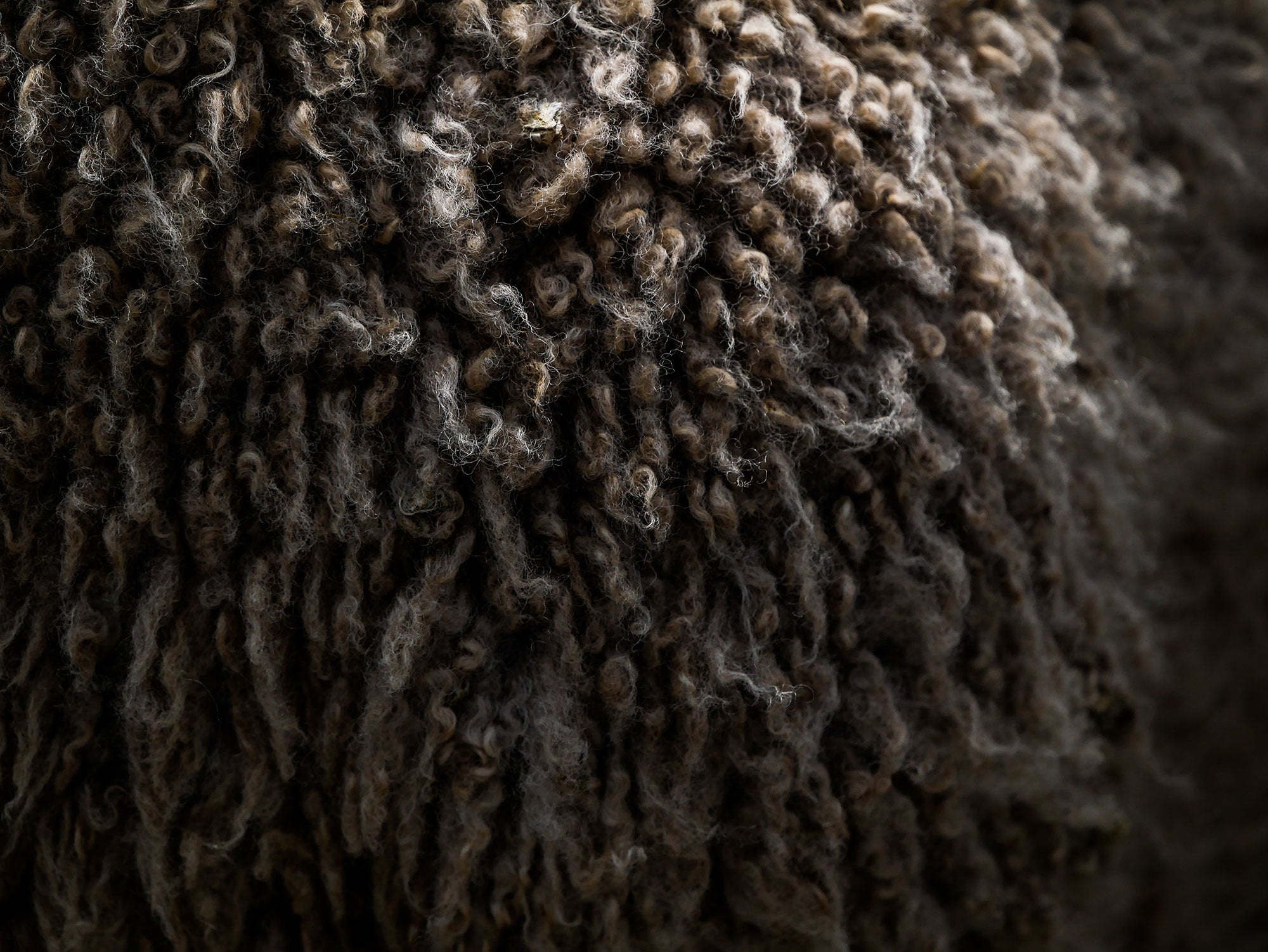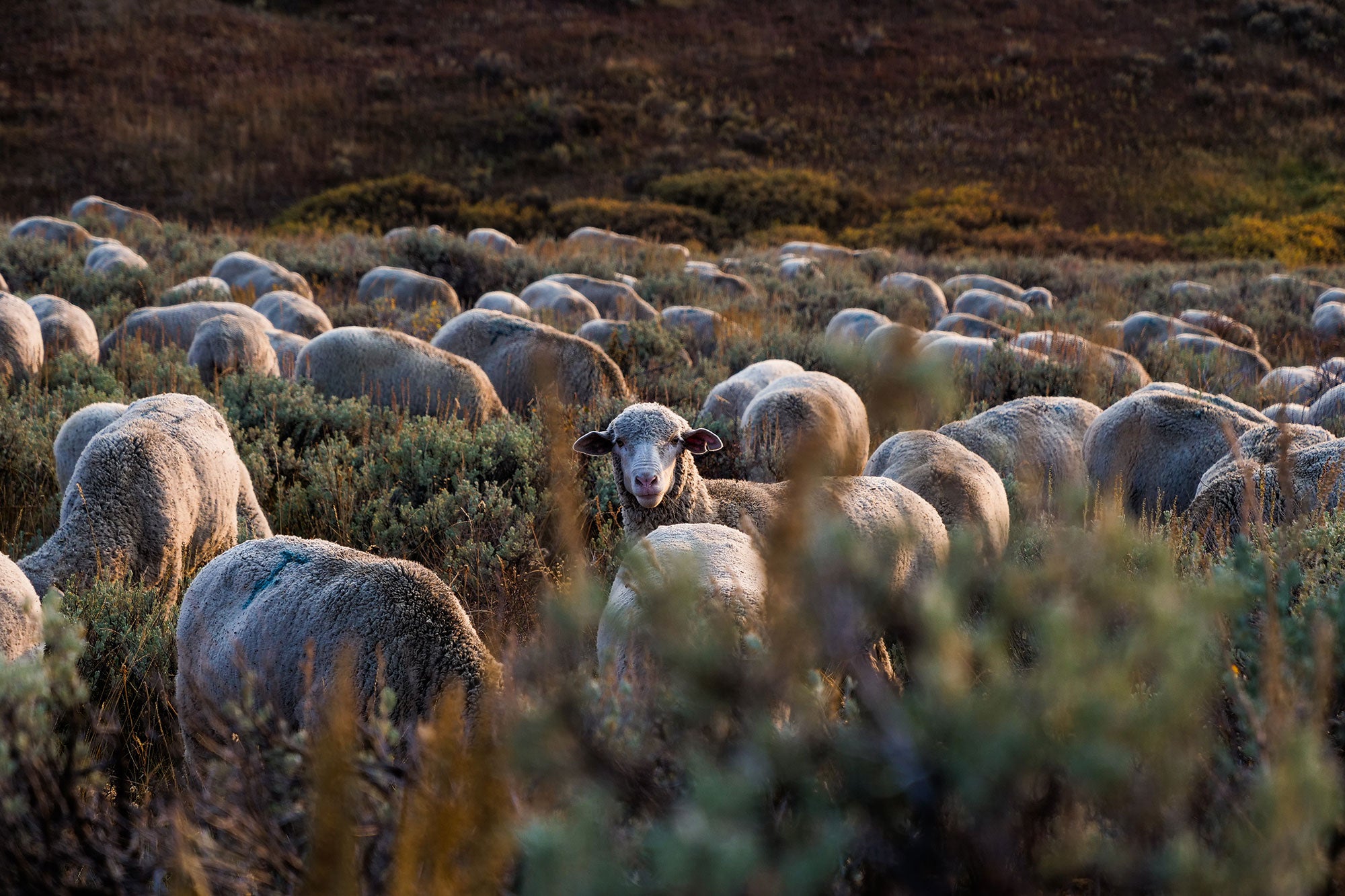If you’ve ever been around sheep, you know that for a majority of breeds, they need to be sheared. But what many people don’t realize is that in the U.S., domestic wool isn’t often a profitable commodity. In fact, many sheep producers say that it’s more of a burden than a benefit, particularly because their focus is on the animal meat, not on its coat. So, a lot of small-scale farmers find that the cost of shearing and potentially transporting the wool outweighs any potential return on wool sales, making it an economic loss before the wool even leaves the farm.
I used to raise sheep, and every year we had to hire professional shearers to do the job. Shearing is an incredibly skilled trade — one that requires a thorough understanding of animal care with a lot of precision and experience. That being said, finding a good shearer is almost overwhelmingly difficult in a lot of parts of the U.S. And it’s no surprise that with the skill necessary and the scarcity of professionals in this industry, their prices have tend to rise in recent year.
In some bright spots among wool producers — especially in the U.S., these are notably rare — high-end wool fibers, such as Merino, find their niche. Apparel brands such as Duckworth, for example, have managed to carve out a successful market for premium USA wool by partnering directly with a source farm. Pendleton is another major American brand that sources its wool from farmers in the Pacific Northwest. And Roswell Wool operates the largest wool warehouse in the nation, claiming they market about 3 million pounds of wool, or “nearly 30% of the fine and medium wools in the United States.”
But for so many sheep producer, competing in that space can be nearly impossible. The U.S. wool market is flooded with imports from countries like Australia, New Zealand, and Ireland — places where wool production is a dominant industry and where the supply chain is truly known for profitability and efficiency. For proof, just look at major U.S.-based outdoor clothing brands such as Smartwool, Filson, or Minus33, which source their wool from overseas even if the processing and garment production ends up being done domestically.

A lot of this happens because most sheep raised in the U.S. are not bred for wool, so the infrastructure for wool harvesting and distribution hasn’t been cared for. Two of the most common American breeds (both of which I used to raise) are Suffolk and Hampshire, but they are primarily raised for meat. Their wool isn’t soft or fine for high-end textiles — it typically ends up in carpet fibers, home insulation, or other industrial applications, where the farmers and shearers are paid very little.
How the data on wool shakes out
According to U.S. Department of Agriculture’s census data, there are about 27,000 farms in the U.S. actively producing wool (split into fine and coarse categories based on microns), yet the overwhelming number of those operations are smaller, between 1 and 99 acres. There are closer to 88,000 farms with sheep total, but as noted, those are largely driven by protein production rather than wool.
“Being a producer, I see the growing need to market America’s wool in a strong Warehouse system,” Roswell Wool explained on their website. “As more and more of the U.S. production is being exported. Foreign & Domestic buyers are looking to locate wool supplies in large quantities as the logistics of moving wool is very expensive.”
When asked about the perceived lack of profitability in much of the U.S. wool market, one shearer on Reddit explained the situation and highlights some of the diversity needed in the marketing approach: “Shipping it is too expensive to make it worth anything. I’m trying to develop a garden mulch product that I could make with all the free wool I have access to. The trick is to create something with minimal processing. Processing wool involves lots of labor and makes the finished product too expensive to make in North America.
“Btw, wool does not burn. If you want to get rid of the wool it’s better to compost it or use it as bedding for the sheep. Garden mulch is also a great option.”
While there are over 60 recognized sheep breeds in the U.S., only a handful have a strong presence the industry. Most sheep production in the U.S. happens in Texas, California, Wyoming, Colorado, and Utah, but again, most of these sheep aren’t prized for their wool. Here are some of the breeds you’re most likely to see:
- Suffolk — One of the most popular sheep breeds in America, Suffolks are large, fast-growing, and primarily raised for meat. They have black faces and legs, with a thick wool coat that lacks the fine fiber quality needed for clothing or premium textiles. Instead, their wool is coarse and primarily used in industrial products.
- Hampshire — Similar to Suffolks, Hampshire sheep are another black-faced breed bred for meat production. Their wool is medium-grade and not particularly valuable in the textile industry. Like Suffolk wool, it often ends up in carpets, insulation, and upholstery padding.
- Dorset — Dorsets are a white-faced breed valued for their ability to breed year-round, making them a popular choice among commercial meat producers. Their wool is of slightly higher quality than Suffolks or Hampshires, but still not on par with fine wool breeds like Merinos.
- Rambouillet — This breed is one of the few exceptions in the U.S. that produces high-quality wool. Descended from the famed Merinos of Spain, Rambouillet sheep grow fine, soft wool that is in demand for premium garments. However, their numbers are relatively small compared to the dominant meat breeds, and even Rambouillet wool struggles to compete with imported Merino.
- Columbia — Developed in the U.S., Columbia sheep were bred for both meat and wool production. While their fleece is softer than that of a Suffolk or Hampshire, it still doesn’t match the quality of Merino or Rambouillet. As a result, Columbia wool is used for blankets, outerwear, and heavy fabrics instead of luxury textiles.

Among the best things being done to support the U.S. wool market are “wool pools,” a cooperative marketing effort where small wool producers combine their wool to create larger, more attractive lots for sale to mills. There is a detailed list of wool-pool opportunities on the American Sheep Industry Association’s website.
By sending their wool to the co-op, “farmers are guaranteed at least something” in terms of compensation, Bob Stieg, CEO of The Clermont Foundation, told a news outlet during one of these events.
If someone is able to provide fleeces from several thousand sheep, “they’re [marketers] going to send a tractor-trailer to you,” he added — but they won’t do so for lesser amounts. So much of the issue comes down to infrastructure. Compare that to places such as New Zealand and Australia, where fine wool breeds dominate, and you’ll see some of the shortcomings that American wool industry has struggled through.
What can be done
The challenges don’t stop at the wool market itself. The number of sheep and sheep producers in the U.S. has plummeted over the last several decades. Since World War II, the U.S. sheep population has dropped by approximately 90 percent. Wool was once a critical resource for military uniforms and textiles, but as synthetic fibers became more popular and cheaper, demand for wool declined. Today, it’s simply not a priority in American agriculture.
It’s a shame because wool is one of the most incredible natural fibers available. It’s sustainable, biodegradable, and recyclable. It keeps you warm even when wet, wicks moisture, and lasts for years. Yet, despite all of these benefits, the U.S. market struggles to support domestic wool producers.
So, what can consumers do? Simply put, support American-grown wool whenever possible. If you see products labeled as USA-grown wool, buy them. Every purchase helps keep domestic wool production alive and encourages growth in an industry that needs it. Wool is an amazing fiber and deserves a comeback. But without consumer and corporate payout support, the challenges of shearing costs, foreign competition, and market decline will continue to push it further to the sidelines of American agriculture.
Michelle Miller, the Farm Babe, is a farmer, public speaker, and writer who has worked for years with row crops, beef cattle, and sheep. She believes education is key in bridging the gap between farmers and consumers.



